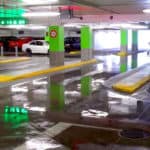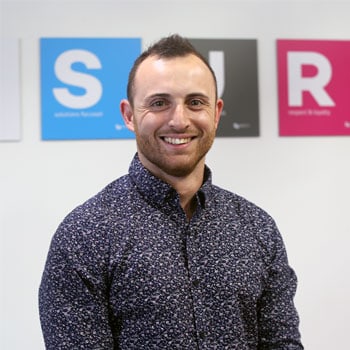Protecting concrete car parks is becoming a big topic. Alex, one of MARKHAM’s architectural consultants, walks through the big four – how we can help multi-level car park structures, both above ground and in basements. What’s the challenge caused by exhaust fumes? What is our performance-based warranty? And can the same technology be applied to older structures?
What can MARKHAM do for Concrete Car Parks?

Invisible Strength
What can MARKHAM do for Concrete Car Parks?
/
RSS Feed
What can MARKHAM do for Concrete Car Parks?
What can we do for car parks? markhamglobal.com/what-can-we-do-for-car-parks
Concrete carbonation – why should I care? markhamglobal.com/concrete-carbonation-why-should-i-care
Conquer concrete car park contamination markhamglobal.com/conquer-car-park-concrete-contamination
Carbonation in freshly placed slabs forconstructionpros.com/concrete/article/20861988/carbonation-in-freshly-placed-slabs
View the Transcript
BRENDAN: G’day and kia ora everyone, and welcome to the latest podcast episode in MARKHAM’s Invisible Strength series! Today we’re asking the question, What can MARKHAM do for car parks? I’m Brendan Stead, marketing coordinator situated in the Bundaberg office, and I’ll be interviewing Alex Portelli, our Australian Architectural Consultant, who is situated in the Sydney region. Give our listeners a shout out, Alex!
ALEX: Hey, hey, and hello everybody – hope you’re enjoying our podcast series! And thanks Brendo! A pleasure to be interviewed by one of the greats at MARKHAM!
So at MARKHAM, we are a company going somewhere and we’re looking to leave a legacy. My role is dedicated to working with Architects and designers directly to ensure the correct concrete product and/or solution is chosen to complement their design. We take a lot of pride in what we do, and by doing this we’ve resulted in developing our end to end service.
Our end to end service at MARKHAM, you know, we start with our manufacturing process over in Napier, New Zealand. We then design all our products into the projects where we’re dealing with the architects, and we also provide the specifications for this. We then go as far as installing them onsite and we provide a warranty for all the works carried out. Having this service in the industry allows us to ensure the architect’s design brief is met and the asset owner is covered into the future.
BRENDAN: Thanks Alex! Let’s drive straight into our subject, then; and when we’re talking about car parks we’re thinking of the larger structural entities, both above-ground multi-level car parks, and also basement car parks such as found beneath many high-rise developments. So break this down for us, Alex, what parts of the car park are we focusing on?
ALEX: Yes, too easy. So just to clarify things a little better, MARKHAM’s focus is on concrete, and we’re talking about the concrete structural elements.
The four key points I’d like to talk about include:
1) Waterproofing for basements and walls;
2) Sealing and hardening of the floors;
3) Anti-dust treatment for the ceiling and
4) Remediation on existing structures
BRENDAN: Right, that’s a fairly broad selection! Go ahead with your first topic, then, how can we help with waterproofing?
ALEX: Yes, cool. So with waterproofing, we like to be involved early in the structural waterproofing process, to ensure we have covered every aspect of the project’s intended requirements. We do put a big emphasis on that because it’s very important to make sure that everything is right from the design stage, so it runs very smoothly throughout the build process.
Our BASE-TECT system is for concrete basements. This includes a three-part holistic waterproofing system which consists of: delayed swell gaskets for all construction joints and penetrations etc; a concrete admixture for internal waterproofing of the concrete matrix; and a spray-applied hydrogel to assist in curing and offering additional waterproofing.
This is a real need in the industry; basement waterproofing is one of the major issues in Australia, in Australian high-rise apartments at the moment.
We can also utilize this system in exposed roof decks of multi-story car parks to waterproof the concrete deck itself.
So if you’re looking at designing a concrete basement or a multi-story car park, we’re very keen to get involved at the design stage and talk about our performance warranty for that kind of project.
BRENDAN: Very good! So, yes, structural waterproofing is certainly a challenge and a pain point in many projects. Would you say there’s a cost-benefit to using the BASE-TECT system?
ALEX: Yes, absolutely. One of the main cost-saving benefits is the fact that you are actually waterproofing as you building it, and not having to wait for the waterproofing factors to be installed by multiple trades, and then waiting for the concrete to be poured on-site. So you’re saving both time and money, in that sense.
So our BASE-TECT system saves money on materials and labour, as I mentioned. It doesn’t require multiple trades on-site to install it. Most importantly it comes with a significant performance-based warranty.
BRENDAN: That is important, we’ll circle back to that point later. Moving on to your second focus topic, why do we need to seal and harden the floors?
ALEX: Obviously in a car park you’ve got cars! – and therefore you get traffic wear and abrasion. These will do two things:
ONE, they make the floor uneven, which can be dangerous for foot traffic, and can cause trip hazards etc, because of the lost concrete at the surface.
SECOND is it creates concrete dust, which can in fact contribute to silicosis, which is not a good situation to be in. So you’ve got a number of reasons to protect your project from day one.
What we recommend AQURON hydrogel treatments for sealing, deep hardening, anti-dusting – and you actually get a side benefit of curing enhancement.
BRENDAN: That’s brilliant! So I have a specific question on that, what about line marking, and zone delineations and so on – can they be applied over this treatment?
ALEX: Yes, absolutely. So there are no compatibility issues, as such; anything that can go on bare concrete can go on AQURON treated concrete.
In a car park, we recommend a broom finish for slip resistance; the hydrogel will help preserve the specified finish long term.
An important note to make especially when designing a multi-story car park close to residential buildings, or anywhere for that matter, is that AQURON does not promote or contribute to tyre squeal as it penetrates into the concrete, and doesn’t remain topical.
BRENDAN: That’s quite a bunch of benefits! I want to ask about the warranty on that, too, but we’ll bundle all that topic together at the end. Now you’ve mentioned dust sealing for the floor, and it’s also your topic for the ceiling – can you tell us more about that?
ALEX: Again it’s all about the dust. The high carbon dioxide content of exhaust fumes actually contributes to carbonation, which can result in surface deterioration. Once the concrete reaches this level of deterioration, it will start to dust, and that dust is a health hazard, particularly if someone is using a particularly declining car park every day. This is why we recommend applying the hydrogel treatment to exposed concrete ceilings or soffits, to eliminate that from happening.
BRENDAN: Yes, I see. Well, I think we can come back to the topic of warranty again. You’ve mentioned two things, the End-to-End service, and Performance-Based warranty. Can you bring those together for us?
ALEX: Yes, all right, we’ll start at the beginning. So with the end to end service, once we have been engaged to assist in the design of a project, and our design input has been accepted and documented, we follow this closely through the tender process. Once the builder has been awarded we engage with them to organize a pre-start meeting making sure they understand why it is important to follow these specifications. We will also discuss again the areas to be treated, and this is done off a marked plan we completed at the tender stage. Once everyone is happy to go ahead, and we have started on-site, our applicators follow a marked plan that coincides with the pour schedule. After the product has been applied, the applicator will fill out an application form and have it signed by the Project Manager. The application form then gets filed into the project folder. When all applications are complete, all the application forms and marked plans are then submitted for acceptance from the builder. Only when we have the final sign off will the warranty process initiate.
Now MARKHAM’s warranties are performance-based warranties; they’re not just a product swap warranty. For example, if we were engaged to apply our AQURON 2000 product for moisture control under flooring, and the flooring “popped” due to moisture; and if all the floor laying processes were followed correctly; we would be liable to remove all the flooring, prepare the surface, re-lay the flooring, back to its intended purpose. This is why it is extremely important for MARKHAM to follow its tight Quality Assurance processes, to guarantee that the application procedures were followed during the process, to eliminate these things from happening.
BRENDAN: OK, that makes sense, that’s all coming together. Now we had one topic that you mentioned at the outset that you haven’t talked about yet; you mentioned remediation. That’s not so much an architect’s field, is it?
ALEX: No, not so much, we’d be more likely to be talking to structural or civil engineers, when it comes to remediations and existing structures. But yes, our AQURON hydrogel treatments can be used on ageing concrete, to arrest internal deterioration mechanisms, such as the carbonation we mentioned, but also internal reactions driven by contaminants that the cars bring in on their wheels.
AQURON hydrogels can seal non-moving cracks up to 0.5mm, and arrest the movement of moisture and therefore the internal reactions that depend on moisture.
Often remediation involves the replacement of concrete or steel, but hydrogels can be part of that process too, making the repairs more effective and long-lasting. We always say the sooner you address the issue, the cheaper it will be, and proactive maintenance is the key!
BRENDAN: Very sensible. Thanks for all that information, Alex, it’s been very helpful.
And to all our listeners, if you want to find out more, head over to our website markhamglobal.com – you can get in touch from our contact page, or try Percy the chatbot – and we’ll be keen to help you with your specific project! Thank you for listening in, and don’t miss our next episode!
ALEX: See you!
Want to Contribute?
Feedback on our podcasts? Suggestions for future topics? Looking for more information on topics we’ve discussed? Send us a message – we’ll be in touch within a day or two.
More about MARKHAM
MARKHAM are dedicated to providing innovations for concrete and construction. Focusing on concrete waterproofing solutions, penetrating concrete sealers and durability treatments for concrete.
Podcast Categories
Latest Episodes

Doug & Laike Share Their Week – Western Australia, Christchurch, and a Focus on Low Carbon Concrete
Laike and Doug wrap up their week again with a 10-minute chat. They’ve each been

Doug & Henry Share Their Week – R&D, Melbourne Traffic, Basement Waterproofing, And ‘CONQOR Your Health’
It’s Henry’s turn to join Doug in the podcast studio – in person this time!

Doug & Laike Share Their Week – Seychelles, Readymix Plants, And A Bike Ride
Once again Doug and Laike sit down for a 10 minute recap from the week.
invisible strength podcast
The whole MARKHAM team is pleased to present you with our podcast series, INVISIBLE STRENGTH. In this series of interviews, we’ll walk through the science and challenges of concrete durability, what goes wrong in the field – and the advanced methods available to restore and enhance service life to concrete construction.
INVISIBLE STRENGTH reflects a number of factors in concrete construction and durability. When things go wrong, the evidence can become very visible indeed. However, when all is going well, there’s nothing particular to be seen!
MARKHAM’s concrete treatments, too, are invisible once completed – and the result is the long internal, invisible durability of the concrete.
So join us as we explore the unseen world inside concrete – why it matters, and how it can be protected!

